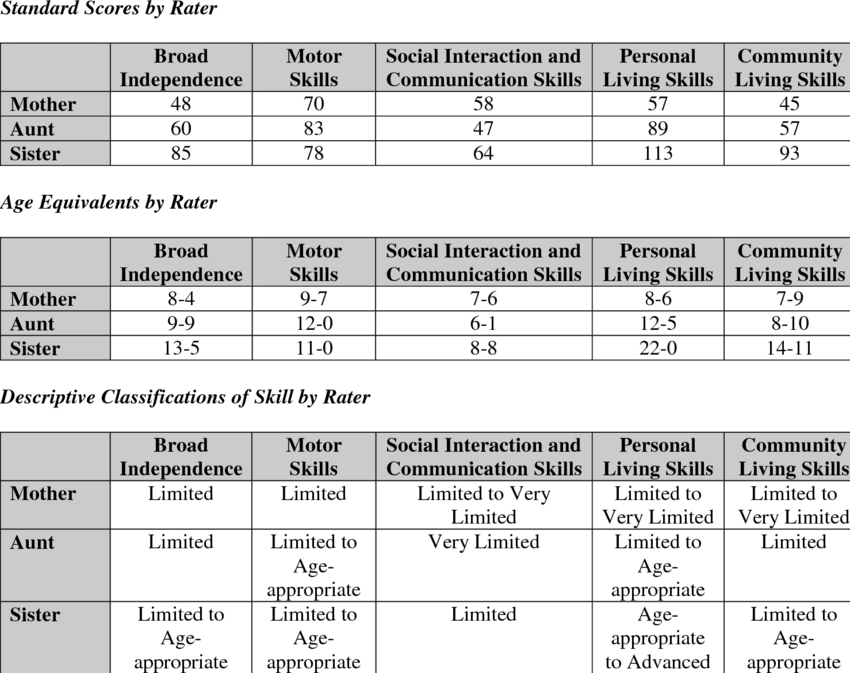The Adaptive Behavior Assessment SystemThird Edition (ABAS– – III) is a highly regarded assessment that gives a complete picture of adaptive skills across the life span. Retaining all of the essential features that made the second edition the preferred instrument, the ABAS -3 is even easier to administer and score. Phonological and Print Awareness Scale (PPA Scale) Free Online Scoring; Adaptive Behavior Assessment System, Third Edition (ABAS-3) Social Responsiveness Scale™, Second Edition (SRS™-2) Developmental Profile™ 3 (DP™-3) School Motivation and Learning Strategies Inventory™ (SMALSI™). Home » services » assessments » developmental assessments » abas-ii – adaptive behaviour assessment system The Adaptive Behaviour Assessment System, Second Edition (ABAS-II) is a multidimensional and standardised assessment tool used to assess the functional skills necessary for daily living of individuals between 0 to 89 years of age.
The Adaptive Behavior Assessment System, Third Edition (ABAS-3) is a comprehensive, norm-referenced assessment of adaptive skills needed to effectively and independently care for oneself, respond to others, and meet environmental demands at home, school, work, and in the community. The ABAS-3 is a revision of the ABAS-II that preserves the strongest aspects of the ABAS-II while incorporating improvements.

Abas Scoring Software
It provides a complete assessment of adaptive skills across the life span for ages from Birth to 89 years. It can be administered in 15 to 20 minutes. The ABAS-3 includes five rating forms, each for a specific age range and rater:

- Parent/Primary Caregiver Form (Ages 0–5)
- Teacher/Daycare Provider Form (Ages 2–5)
- Parent Form (Ages 5–21)
- Teacher Form (Ages 5–21)
- Adult Form (Ages 16–89)
Parents, family members, teachers, daycare staff, supervisors, counselors, or others who are familiar with the daily activities of the individual being evaluated can complete these forms. In addition, the Adult Form can be administered as a self-report. The items may be read aloud to raters who have low sight or reading skills. Although it’s possible to evaluate adaptive skills using only a single rater, gathering ratings from several people will provide a more complete assessment. Multiple ratings show how the individual performs in various settings. When different forms are used by different raters to evaluate an individual’s adaptive skills, a comparative report can be generated to show areas that warrant further attention.
The ABAS-3 covers three broad adaptive domains: Conceptual, Social, and Practical. Within these domains, it assesses 11 adaptive skill areas (each form assesses 9 or 10 skill areas based on age range). Items focus on practical, everyday activities required to function, meet environmental demands, care for oneself, and interact with others effectively and independently. On a four-point response scale, raters indicate whether the individual can perform each activity, and if so, how frequently they perform it when needed.
The ABAS-3 is aligned with the AAIDD, DSM-5, and IDEA specifications, and works well within an RTI context. It generates norm-referenced scaled scores and test-age equivalents for the 11 skill areas. It also provides standard scores, confidence intervals, and percentile ranks for the three broad adaptive domains and the summary score—the General Adaptive Composite. In addition, all scores can be categorized descriptively (Extremely Low, Low, Below Average, Average, Above Average, High).
The ABAS-3 can be scored by hand or using software. The Unlimited-Use Scoring Assistant and Intervention Planner Software generates a narrative interpretation of all scores, strengths and needs analysis, composite score discrepancy analysis, and more.
The ABAS-3 Intervention Planner allows users to create a customized therapy plan based on adaptive skill area deficits identified by the ABAS-3. The Intervention Planner offers:
Abas Scoring Online
- Simple, straightforward intervention activities for each ABAS-3 item across all forms
- Developmentally appropriate strategies to help improve functioning at home, school, work, and in the community
- Versatile activities that can be used with an individual, a small group, or in the classroom
- Suggestions for guiding teacher and family involvement in intervention programs
- Progress Monitoring Report for online and software formats
Abas Scoring Login
Last updated: 07 Apr, 2010 How to enter score data:Examinee Data:
Assessments: Click the Assessment slider bar on the navigation panel. Select the appropriate assessment to open the Assessment List window.
Raw Scores:
Report Wizard:
|